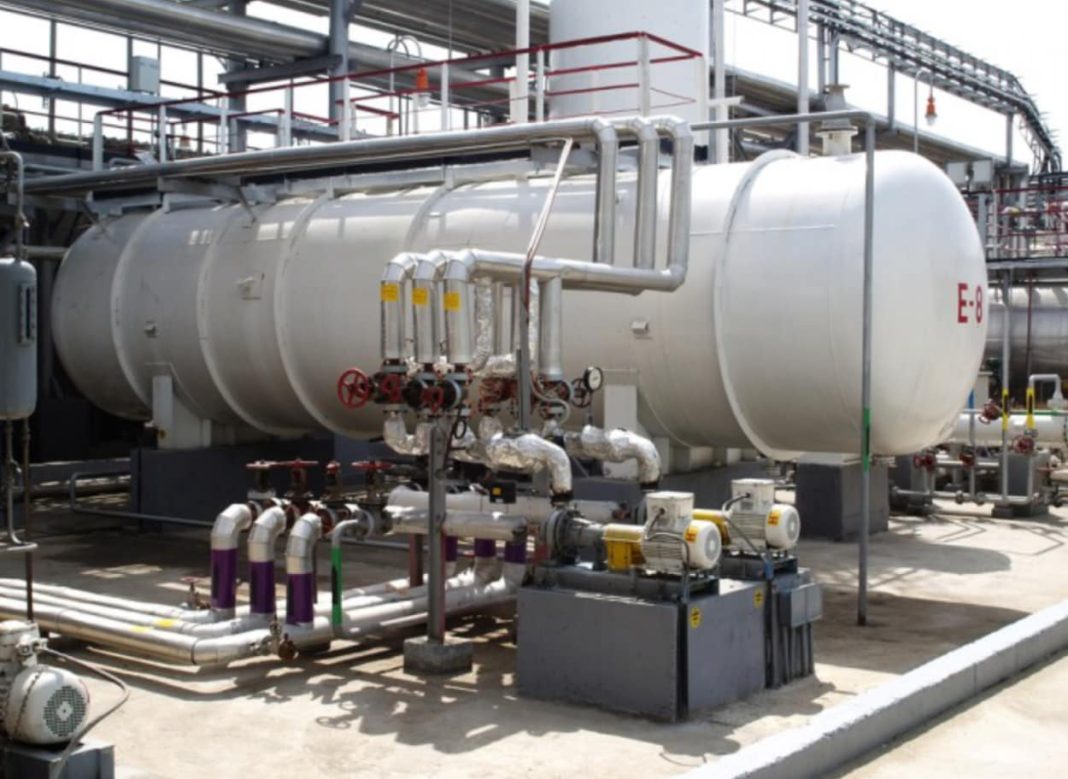Last Updated on February 28, 2024 by admin
If you work in the industrial sector, then you know how important it is to ensure that your pressure vessels are functioning properly. These vessels play a critical role in many industrial processes and are often subjected to harsh conditions. Over time, materials used in these vessels can degrade, which can lead to catastrophic failure if not detected and addressed promptly.
That’s where API 510 Pressure Vessel Inspections come into play. API 510 inspections are designed to help detect material degradation in pressure vessels before it becomes a safety issue. By using non-destructive testing methods, certified inspectors can identify potential issues with the vessel’s materials and recommend appropriate remedial actions.
In this article, we’ll explore why API 510 inspections are so important, what type of material degradation they aim to detect and prevent, the NDT methods used during inspection, inspection standards set by API, and the vital role certified inspectors play in ensuring safe operation of pressure vessels.
Key Takeaways
– API 510 inspections can detect material degradation in pressure vessels before it becomes a safety issue.
– Non-destructive testing methods, such as ultrasonic testing and radiographic testing, can identify potential issues and prevent failure.
– Inspection frequency and specific guidelines for inspection techniques and repair procedures are provided by API 510 Inspection Standards.
– Thorough documentation and reporting play a critical role in preventing accidents and maintaining safety compliance over time.
The Importance of API 510 Pressure Vessel Inspections
Don’t underestimate the importance of API 510 pressure vessel inspections – they’re like a check-up for your vessel’s health. These inspections ensure that your pressure vessel can handle the heat and pressure without breaking down, which could lead to costly repairs or even catastrophic failures.
By conducting these inspections regularly, you can save money on maintenance costs in the long run and plan for any necessary repairs or replacements. API 510 pressure vessel inspections are cost-effective because they help identify potential problems before they become major issues.
This allows you to schedule maintenance at a convenient time rather than dealing with an emergency shutdown. By planning ahead, you also have time to order any necessary parts or equipment, reducing downtime and increasing productivity.
Understanding material degradation in pressure vessels is crucial in preventing failure and ensuring continued operation of your plant or facility.
Understanding Material Degradation in Pressure Vessels
Understanding how materials break down over time is important when it comes to maintaining the safety and longevity of equipment used in high-pressure environments. Pressure vessels are designed to withstand a wide range of temperatures, pressures, and corrosive substances, but they’re not immune to the effects of material degradation.
By understanding corrosion mechanisms and identifying signs of material degradation, you can take steps to prevent catastrophic failures that could result in injury or loss of life.
Here are five things you should know about material degradation in pressure vessels:
– Corrosion can occur on both the inside and outside surface of a vessel due to exposure to chemicals, moisture, or other corrosive agents.
– Stress corrosion cracking can occur when a metal is exposed to high stress levels combined with a corrosive environment.
– Fatigue cracks can develop as a result of repeated stress cycles which weaken the metal over time.
– Creep deformation occurs when metals that are exposed to high temperatures for extended periods begin to deform under load without fracturing.
– Material thickness measurements must be taken regularly during inspections in order to detect thinning due to corrosion or erosion.
Understanding these factors is essential for preventing dangerous pressure vessel failures. Non-destructive testing (NDT) methods used in API 510 inspections provide an effective way for inspectors to identify potential problems and ensure safe operation.
Non-Destructive Testing (NDT) Methods Used in API 510 Inspections
One way to ensure the safety and longevity of equipment in high-pressure environments is by utilizing non-destructive testing (NDT) techniques. These methods are crucial for detecting material degradation in pressure vessels, which can lead to devastating consequences if left undetected.
NDT techniques such as ultrasonic testing, radiographic testing, magnetic particle inspection, and visual inspection provide a comprehensive approach to identifying potential problems before they become catastrophic.
Inspection accuracy is critical when it comes to NDT methods used in API 510 inspections. These techniques require skilled professionals who have extensive knowledge of materials, welding processes, and inspection procedures. With proper training and certification, inspectors can accurately identify material defects and determine the appropriate course of action to maintain vessel integrity.
As we move forward into discussing API 510 inspection criteria and standards, it’s important to note that these criteria and standards set specific requirements for inspector qualifications, examination procedures, and acceptable defect criteria.
API 510 Inspection Standards
As you delve into the world of API 510 Inspection Standards, you need to be aware of the guidelines for inspection, repair, alteration, and re-rating of pressure vessels.
These standards provide a framework for ensuring that your pressure vessels are safe and reliable. By following these guidelines, you’ll not only meet regulatory requirements but also decrease the risk of accidents and equipment failures in your facility.
Guidelines for Inspection
Inspectors must follow strict guidelines to ensure that pressure vessels are thoroughly inspected for any signs of material degradation, which can be a matter of life or death in certain industries.
Inspection frequency is determined based on the vessel’s design and its service conditions. The inspection techniques used should also be appropriate for the type of damage that could occur to the vessel materials.
To guide inspectors in their work, API 510 provides specific guidelines for inspection techniques, including visual examination, liquid penetrant testing, magnetic particle testing, ultrasonic testing and radiographic testing. These methods help detect different types of material degradation such as corrosion, cracking or deformation.
Inspectors must also consider factors such as environmental conditions and operational history when conducting inspections. They must take into account all relevant data available about the vessel’s past performance and repairs when determining how often an inspection should take place.
Incorporating these guidelines is crucial because they help ensure safety standards are met while preventing catastrophic accidents from happening due to unnoticed material degradation. To address issues found during inspections properly, repair, alteration or re-rating may need to be performed on pressure vessels before returning them back into operation safely.
Repair, Alteration, and Re-Rating of Pressure Vessels
To ensure safe operation of pressure vessels, it’s essential to repair, alter, or re-rate them based on inspection findings and operational requirements. Repair procedures should be in accordance with API 510 standards. These standards specify acceptable repair methods for different types of defects. For instance, minor repairs such as grinding or filling can be done without any formal approval. However, major repairs such as welding require a detailed procedure that meets API requirements.
Inspection frequency plays a crucial role in determining whether pressure vessels need repair or alteration. Regular inspections must be conducted by certified inspectors to detect material degradation and other defects early enough before they become catastrophic. If an inspection finds that a vessel has exceeded its design life, then it may require re-rating to operate safely at lower pressures and temperatures.
In the next section, we will discuss the role of certified inspectors in API 510 inspections and how they can help identify potential issues before they cause significant damage.
The Role of Certified Inspectors in API 510 Inspections
As a certified inspector, you play a crucial role in API 510 inspections. Your extensive knowledge and experience in the field make you capable of detecting material degradation in pressure vessels and ensuring their safe operation.
It’s your responsibility to ensure that all safety requirements are met during the inspection process. You should also accurately report and document any findings for further action.
Knowledge and Experience
You’ll need a solid foundation of knowledge and experience to effectively detect material degradation during API 510 pressure vessel inspections. Certification is important, but it’s not always the most reliable indicator of an inspector’s capabilities.
Experience in the field can provide a deeper understanding of industry standards and practical applications, allowing for more accurate assessments of equipment.
It’s important to note that while industry standards are crucial to follow, practical applications must also be considered during inspections. An experienced inspector can assess whether certain materials or procedures may be better suited for specific vessels or conditions than what is outlined in standard practices.
Ultimately, this knowledge and experience allows for a comprehensive inspection that not only meets compliance with safety requirements but also ensures the longevity and efficiency of the equipment being inspected.
Compliance with Safety Requirements
Having a solid understanding of safety requirements is essential to ensure that pressure vessels are in compliance with industry standards and regulatory guidelines. Pressure vessel inspections involve examining the structural integrity, material degradation, and overall safety of the equipment.
To comply with safety standards, inspectors must have a thorough knowledge of the applicable codes and regulations governing pressure vessels. This includes understanding the inspection frequency required for each type of vessel, identifying potential hazards associated with specific materials or processes, and ensuring that all necessary safety features are installed and functioning correctly.
Compliance alone is not enough; inspectors must also thoroughly document their findings during inspections to provide a clear picture of any issues or concerns related to the equipment. Reporting and documentation play a critical role in maintaining safety compliance over time, as they allow for continuous monitoring and improvement of pressure vessel operations.
Overall, having a strong understanding of safety requirements and complying with them through thorough inspections and documentation is crucial for ensuring the safe operation of pressure vessels and preventing accidents.
Reporting and Documentation
Don’t miss out on the importance of thoroughly documenting inspections for pressure vessels to ensure continued safety compliance and prevent potential accidents. Documentation accuracy is crucial in identifying any material degradation or defects found during inspection, which can lead to further assessments and necessary repairs before the vessel can be used again.
Quality control measures should be implemented throughout the documentation process to ensure that all inspections are accurately recorded and maintained. To achieve proper documentation accuracy, it’s essential to have a systematic approach when recording inspection data. This includes using standardized forms and templates, clearly labeling all documents with relevant information such as the type of vessel being inspected, dates of inspection, and any defects found.
Additionally, quality control measures should be put in place to review all documentation for completeness and consistency before finalizing records. By implementing these practices, you’ll not only ensure compliance with safety regulations but also provide a valuable resource for future reference in maintaining the integrity of your pressure vessels.
Conclusion
In conclusion, API 510 pressure vessel inspections are crucial in ensuring the safety and reliability of these vessels. Material degradation is a common issue that can compromise the structural integrity of pressure vessels.
NDT methods such as ultrasonic testing and radiography are used to detect defects caused by material degradation.
API 510 inspection standards provide guidelines on inspection frequency, procedures, and acceptance criteria. Certified inspectors play a vital role in conducting thorough inspections and identifying potential hazards before they cause catastrophic failures.
By adhering to API 510 standards, industries can minimize the risks associated with pressure vessel operation and ensure compliance with regulatory requirements.
Overall, API 510 inspections are an essential aspect of maintaining safe and efficient operations in industries that rely on pressure vessels.









